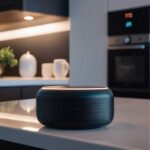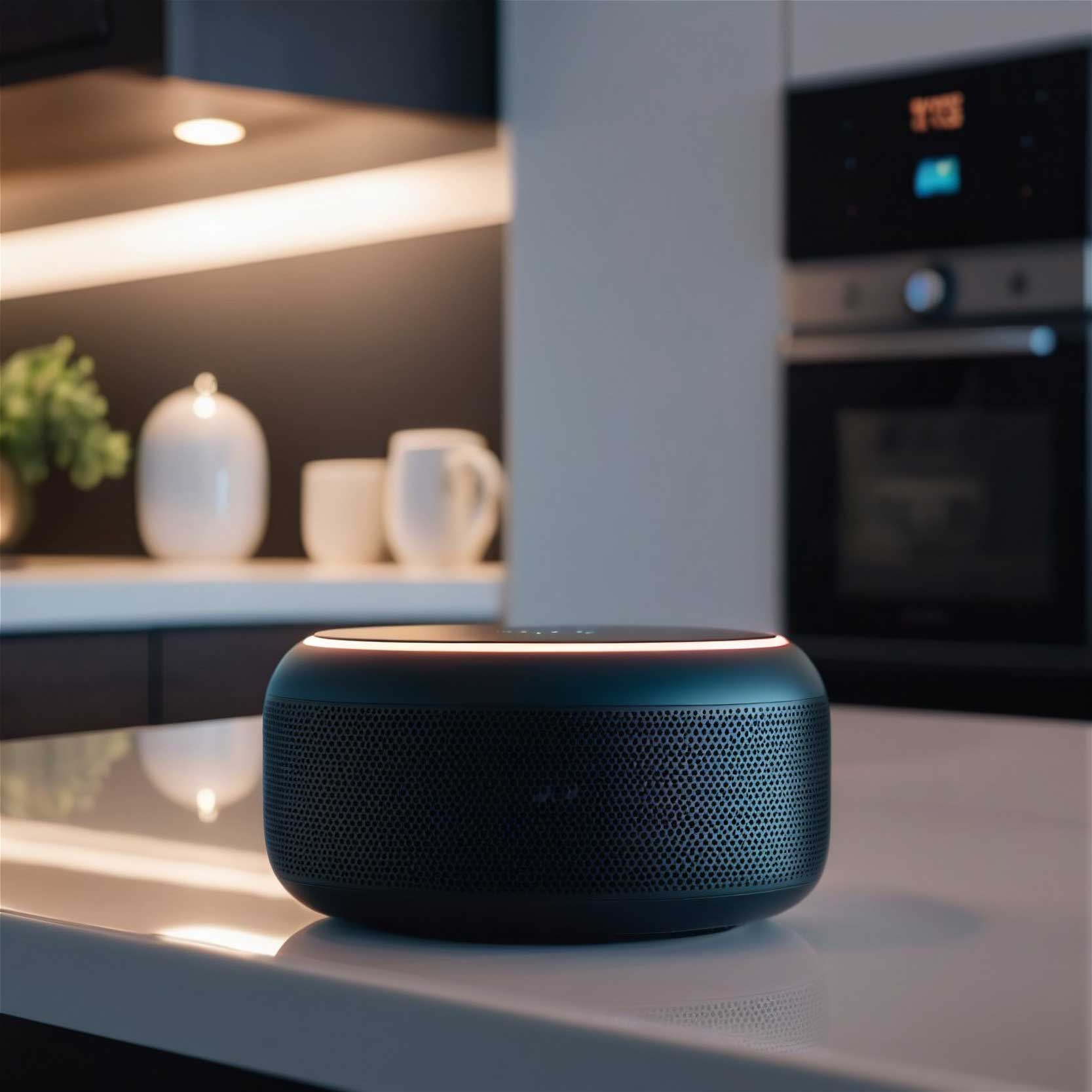Your cart is currently empty!
Voice assistants have become the cornerstone of smart homes, making it easier than ever to control devices, automate daily routines, and access information with just a simple voice command. From adjusting the thermostat to turning off the lights or playing your favorite music, voice assistants bring unparalleled convenience to your smart home setup. In this article, we explore how voice assistants like Amazon Alexa, Google Assistant, and Apple Siri integrate seamlessly with smart home devices, creating a powerful ecosystem that enhances daily life.
1. What Is a Voice Assistant?
A voice assistant is a digital assistant that responds to spoken commands to perform various tasks. Voice assistants are typically embedded in smart speakers, smartphones, or other devices, and they can help you manage your home, answer questions, control smart devices, and much more.
The most popular voice assistants are:
- Amazon Alexa: Found in devices like the Amazon Echo, Alexa is one of the most versatile and widely used voice assistants.
- Google Assistant: Available in Google Nest devices and Android smartphones, Google Assistant is known for its deep integration with Google services.
- Apple Siri: Siri is built into Apple products, such as the iPhone and HomePod, and integrates with Apple’s ecosystem, including HomeKit for smart home controls.
2. How Voice Assistants Work with Smart Home Devices
Voice assistants act as the central hub for controlling all your smart home devices. They integrate with various smart products such as lights, thermostats, security systems, and appliances, allowing you to control them using voice commands.
For example, with a compatible smart home setup, you can say:
- “Alexa, turn on the living room lights.”
- “Hey Google, set the thermostat to 22 degrees.”
- “Hey Siri, lock the front door.”
These voice assistants can also execute more complex tasks by grouping multiple devices into a single command, such as “Good Night,” which could dim the lights, lock the doors, and lower the thermostat—all at once.
3. Key Benefits of Using Voice Assistants in Your Smart Home
Hands-Free Control
One of the biggest advantages of using a voice assistant in your smart home is hands-free control. Whether you’re cooking, cleaning, or lounging on the couch, you can manage your home without needing to pick up your phone or press a button.
For example:
- Control lights and devices: Say, “Turn on the lights” or “Turn off the fan.”
- Set reminders: Ask your assistant to remind you about tasks, such as, “Remind me to take the laundry out in 30 minutes.”
- Play music or media: Command your assistant to play music, podcasts, or audiobooks from your favorite streaming services.
Automation and Routines
Voice assistants allow you to create automated routines that simplify your day. These routines can control multiple devices at once, triggered by a single voice command.
For instance:
- Morning routine: Set up a command like “Good morning” to turn on lights, adjust the thermostat, and play the news.
- Leaving home: A command like “I’m leaving” can turn off the lights, lock the doors, and arm your security system.
- Bedtime routine: A “Good night” command can turn off all lights, lock the doors, and adjust your thermostat for the night.
Increased Accessibility
Voice assistants can make smart homes more accessible for individuals with mobility or vision impairments. With the ability to control the home through voice commands, it becomes easier for everyone to manage household tasks without the need for manual adjustments.
4. Popular Smart Home Devices That Work with Voice Assistants
Voice assistants work with a wide range of smart devices, giving you the flexibility to create a connected home environment tailored to your needs.
Here are some of the most popular smart home devices that integrate seamlessly with voice assistants:
Smart Lights
Control your home’s lighting with voice commands. Brands like Philips Hue and LIFX offer smart bulbs that can be dimmed, changed in color, or switched on/off using Alexa, Google Assistant, or Siri.
Smart Thermostats
Devices like the Nest Thermostat or Ecobee SmartThermostat let you control your home’s temperature with a voice command, making it easy to adjust comfort levels while saving energy.
Smart Plugs
Smart plugs allow you to turn any device into a smart device. With voice assistants, you can switch on or off devices like coffee makers, lamps, or fans by saying, “Turn on the living room lamp” or “Turn off the fan.”
Smart Speakers
Voice assistants are often housed in smart speakers, which provide high-quality audio along with the ability to control your smart home. Devices like the Amazon Echo or Google Nest Audio combine both entertainment and home automation capabilities.
Smart Security Systems
Voice assistants can control smart security systems, including cameras, locks, and alarms. For example, products like Ring or Arlo let you ask Alexa or Google Assistant to show live camera feeds, lock the doors, or arm your home security.
Smart Appliances
Appliances such as ovens, refrigerators, and washing machines are also becoming voice assistant-compatible. You can ask Alexa or Google Assistant to preheat the oven or check if the laundry is done with devices from brands like Samsung and LG.
5. Setting Up a Voice Assistant in Your Smart Home
Setting up a voice assistant in your smart home is a simple process. Follow these basic steps to get started:
- Choose Your Voice Assistant: Decide whether you want to use Amazon Alexa, Google Assistant, or Apple Siri based on the devices you already own or your personal preferences.
- Install Smart Devices: Set up your smart home devices, ensuring they are compatible with your chosen voice assistant. Most devices will guide you through the installation process using their mobile app.
- Connect Devices to Voice Assistant: Use the corresponding app for your voice assistant (Amazon Alexa app, Google Home app, or Apple Home app) to link your smart home devices. Follow the on-screen instructions to complete the setup.
- Create Routines or Automations: Once all devices are connected, you can create routines to automate tasks. For example, you can set up a “Leave Home” routine that automatically turns off lights and locks the doors when you leave.
6. Privacy Considerations
While voice assistants offer convenience, it’s important to consider privacy. These devices are always listening for their wake word (like “Alexa” or “Hey Google”), which can raise concerns for some users.
To manage privacy, you can:
- Mute the microphone: Most voice assistants have a button that disables the microphone when you don’t want them listening.
- Delete recordings: You can access your voice assistant’s app to review and delete past voice recordings.
- Set privacy preferences: Most assistants allow you to adjust privacy settings to limit data collection or require a confirmation before performing certain actions.
7. The Future of Voice Assistants in Smart Homes
As voice assistants continue to evolve, their capabilities in the smart home space are expected to expand even further. Future advancements may include more natural interactions, improved AI-driven automations, and deeper integration with even more household devices.
Some trends to watch include:
- Improved AI: Voice assistants are becoming more intuitive, capable of understanding complex commands and responding with greater accuracy.
- Multi-Language Support: Assistants are increasingly supporting multiple languages and dialects, making them more accessible globally.
- Expanded Device Integration: The number of smart devices that can be controlled via voice assistants is growing, making it possible to automate even more aspects of daily life.
Conclusion
Voice assistants and smart homes are the perfect pairing for anyone looking to simplify everyday tasks, enhance comfort, and increase accessibility. Whether you’re new to smart home technology or already have several devices, integrating a voice assistant into your setup can streamline how you control your home. With hands-free operation, powerful automations, and the ability to manage everything from lights to security systems, voice assistants truly elevate the smart home experience.



Leave a Reply